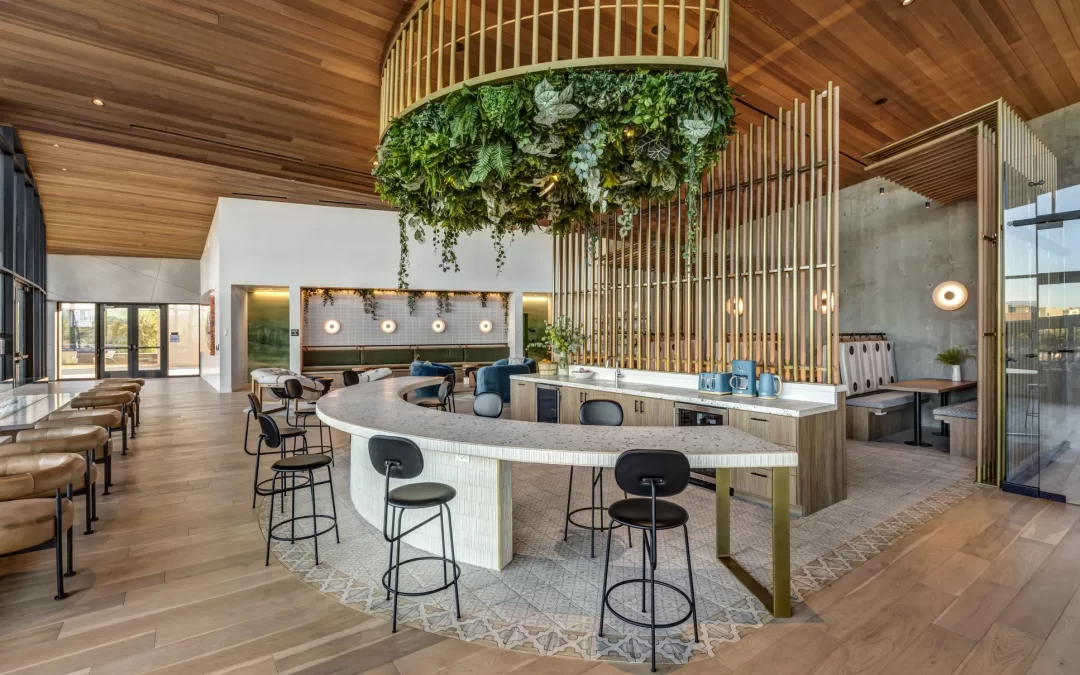Decorative Zoning: The Art of Defining Spaces in Hospitality Design
In hospitality design, versatility and flow are critical to creating environments that cater to diverse guest needs. Whether it’s a bustling hotel lobby, a multi-purpose restaurant, or an expansive event space, the ability to divide areas into functional zones without compromising aesthetics is key. Decorative zoning achieves this by using design elements to define spaces visually and practically, ensuring a seamless guest experience.
Decorative zoning not only enhances functionality but also reinforces the overall aesthetic and branding of a property. It’s about creating spaces that feel both distinct and harmonious, inviting guests to explore, engage, and relax.
What Is Decorative Zoning?
Decorative zoning involves the strategic use of design features to segment larger areas into smaller, purposeful zones. Unlike structural divisions such as walls or permanent partitions, decorative zoning relies on elements like furniture arrangements, lighting variations, rugs, color palettes, and decor to subtly delineate spaces. This approach allows for flexibility, creativity, and the ability to adapt spaces to different functions or guest needs.
The Role of Decorative Zoning in Hospitality
- Enhancing Functionality:
Zoning ensures that each area serves its intended purpose, whether it’s a cozy seating nook, an efficient workspace, or a vibrant social zone. - Improving Traffic Flow:
Clear zones help guide guests intuitively through a space, reducing confusion and enhancing usability. - Creating Ambiance:
Decorative zoning allows for varied atmospheres within a single space, such as a lively bar area transitioning into a serene dining room. - Supporting Branding:
Design elements used in zoning, such as colors or textures, reinforce the property’s aesthetic and identity. - Encouraging Guest Engagement:
Distinct zones invite guests to explore and interact with different parts of the property, enhancing their overall experience.
Key Elements of Decorative Zoning
- Furniture Arrangements:
Sofas, chairs, and tables can be strategically placed to create separate seating areas, dining sections, or workspaces. - Lighting Variations:
Different lighting styles or intensities can define zones, such as soft, ambient lighting for relaxation areas and brighter task lighting for workspaces. - Color and Material Contrast:
Using varied colors, textures, or materials for floors, walls, or furnishings helps visually separate zones. - Rugs and Floor Treatments:
Area rugs or changes in flooring material can signify transitions between zones while adding warmth and texture. - Decorative Partitions:
Screens, bookcases, or plant walls provide separation without creating a closed-off feel. - Ceiling Treatments:
Changes in ceiling height, materials, or lighting installations can visually segment spaces. - Art and Decor:
Wall art, sculptures, or thematic decor elements can anchor specific zones within a larger area.
Applications of Decorative Zoning in Hospitality
- Hotel Lobbies:
Divide large lobbies into check-in zones, casual seating areas, co-working spaces, and coffee nooks using furniture, rugs, and lighting. - Restaurants:
Use partitions, varying table styles, and lighting to create private dining sections, bar areas, and open seating zones. - Event Spaces:
Design flexible layouts with movable partitions and modular furniture to accommodate different event types and guest needs. - Guest Lounges:
Create distinct areas for relaxation, socializing, and dining by combining textures, furniture, and decor. - Outdoor Areas:
Use landscaping, outdoor furniture, and lighting to define zones like dining patios, pool lounges, and garden walkways.
Benefits of Decorative Zoning
- Flexibility:
Decorative zoning allows spaces to be easily adapted for different events, seasons, or guest preferences. - Enhanced Aesthetics:
Zoning creates visually dynamic spaces that feel layered and engaging. - Improved Guest Comfort:
Defined zones cater to various activities, ensuring guests feel comfortable whether they’re working, dining, or relaxing. - Cost-Effective Solutions:
Unlike permanent structural changes, decorative zoning can be achieved with minimal investment and disruption. - Increased Functionality:
Zoning maximizes the usability of a space, ensuring every corner serves a purpose.
Strategies for Implementing Decorative Zoning
- Analyze Guest Needs:
Understand how guests interact with the space to determine the necessary zones. - Plan Transitions Carefully:
Ensure smooth visual and physical transitions between zones to maintain flow and harmony. - Incorporate Flexible Elements:
Use movable furniture, modular decor, or adjustable lighting to adapt zones as needed. - Balance Privacy and Openness:
Use zoning techniques that create separation without making spaces feel isolated or confined. - Align with Brand Aesthetics:
Every element used in zoning should reinforce the property’s overall design language and identity.
Real-World Example: Decorative Zoning in Action
Ace Hotel, New York City: Multi-Functional Lobby Design
The lobby of the Ace Hotel in New York is a masterclass in decorative zoning. By combining eclectic furniture arrangements, varying lighting styles, and area rugs, the space caters to a diverse range of activities. Guests can choose to work at communal tables, relax on plush sofas, or enjoy a drink at the bar—all within the same open space. The cohesive use of materials and decor ensures each zone feels connected while maintaining its unique purpose.
Challenges in Implementing Decorative Zoning
- Balancing Cohesion and Diversity:
While zones should feel distinct, they must also align with the overall aesthetic of the space. - Navigating Space Constraints:
Smaller spaces may require creative solutions to achieve effective zoning without overcrowding. - Maintaining Flexibility:
Zones should adapt to changing guest needs without requiring frequent redesigns.
Future Trends in Decorative Zoning
- Smart Zoning Technologies:
Adjustable lighting, soundproofing, and movable partitions controlled by smart systems will offer greater flexibility. - Eco-Friendly Materials:
Sustainable decor and furniture will play a larger role in zoning solutions. - Multi-Sensory Zoning:
Using scent, sound, and temperature variations to define zones will enhance the guest experience. - Dynamic and Interactive Zones:
Spaces that evolve throughout the day, such as lobbies transforming into event spaces, will become more common.
Conclusion
Decorative zoning is a vital tool in hospitality design, balancing functionality with aesthetics to create spaces that are versatile, engaging, and guest-centric. By strategically using design elements to define areas, hospitality brands can enhance usability, support branding, and elevate the guest experience. As the industry evolves, decorative zoning will continue to be a cornerstone of thoughtful and innovative design.



